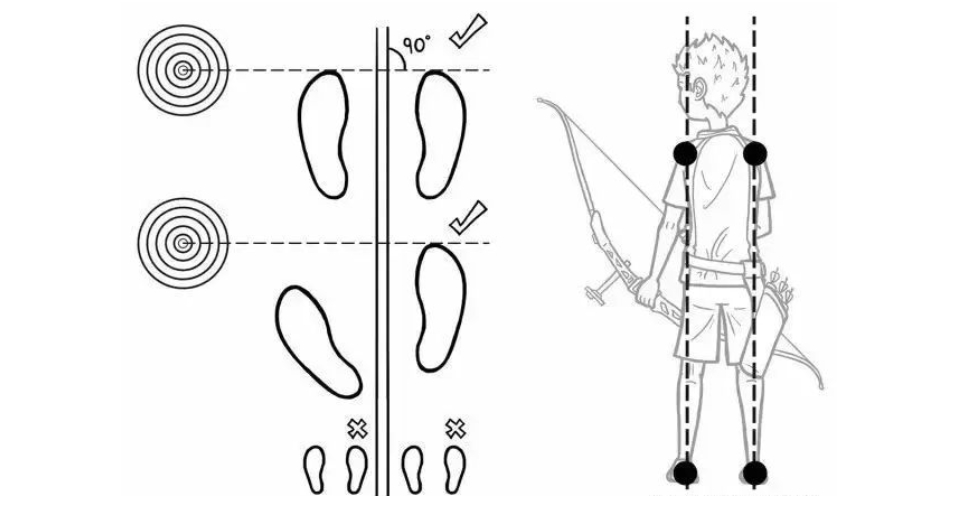Release time:2025-03-13 14:44:53Clicks:author:SPG ArcheryMain categories:Bows, Arrows, Archery Accessories

Trunk:
Don't push your hips toward the target (don't push your hips), tighten your core, use your gluteus maximus slightly, don't lift your hips (don't tilt your pelvis forward), keep your trunk straight, and it should be a cross after the bow is opened, horizontal and vertical.
Don't stick your chest out, but keep your chest slightly tucked in, and compress your ribs.
Standing position (parallel style recommended):
Stand with your feet shoulder-width apart, stand on both sides of the shooting line, and stand naturally.
Head:
Many novices don't turn their heads enough when learning archery, and need to turn more (to the left) to face the target surface.
Upper limbs-bow-pushing arm (generally the left arm):
Shoulder sinking: The shoulder of the bow-pushing arm should not shrug, the lower bundle of the trapezius muscle needs to exert force to pull the scapula down (sink the shoulder), rotate the shoulder joint inward, rotate the deltoid muscle that was originally rushing backward to rush upward, and let the humerus fall into the ball socket of the shoulder joint to strengthen support.
Arm rotation: The push arm rotates and stretches straight, straight but not locked, and the elbow socket rotates from upward to the front of the body. On the one hand, it can avoid hitting the arm, and more importantly, the bones are aligned to strengthen support. That is, turn the arm clockwise until the direction of the elbow socket is consistent with the direction of the body.
Push the bow: Push the bow with the thenar eminence, do not exert force on the fingers, and the forearm muscles should be relaxed as much as possible, as shown in the figure below (before putting on the bow rope, you can hold the index finger and middle finger in a virtual grip), do not hold the bow handle with your hands~ Push the bow, not hold it!
Upper limbs-bow arm (generally the right arm):
Back force: Use the back muscles in the later stage of bow opening, try to reduce the force of the arm muscles, and slightly raise the elbow. The center of the two shoulder joints is in a straight line with the push point, and the two shoulders are collapsed.
Relax your arms: In addition to your fingers, do not use force on the back of your hand and wrist. Try to relax your hand and forearm. The back of your hand should be flat when viewed from above. Imagine your fingers are small hooks, and your palm and forearm are ropes. Beginners tend to clench their fists (arched back of the hand).

Hook the string: Hook the string with three Mediterranean fingers, and put the little finger behind (the little finger and thumb can be buckled together). The first hook in the first row in the picture is the Mediterranean style (index finger on top, middle finger and ring finger on the bottom), which is suitable for beginners learning recurve bows. The second hook in the first row in the picture is the lower three-finger style (all three fingers are below the arrow), which is suitable for the bare bow style of recurve bows. When hooking the string, use the first joint of the middle finger, and the pulp of the index finger and ring finger. Do not use the second joint of the finger to hook the string, which is not conducive to releasing the arrow. Do not pinch the arrow with your fingers when hooking the string, which is not conducive to releasing the arrow and is easy to cause "false empty release".
Leaning position: The leaning point is under the chin. Every time you lean, your head turns and your back hand leans, which is equivalent to the rear aiming of a gun. If the leaning position is not done well or the movements are inconsistent, you will not be able to shoot well.